 Facebook
Facebook
 X
X
 Instagram
Instagram
 TikTok
TikTok
 Youtube
Youtube
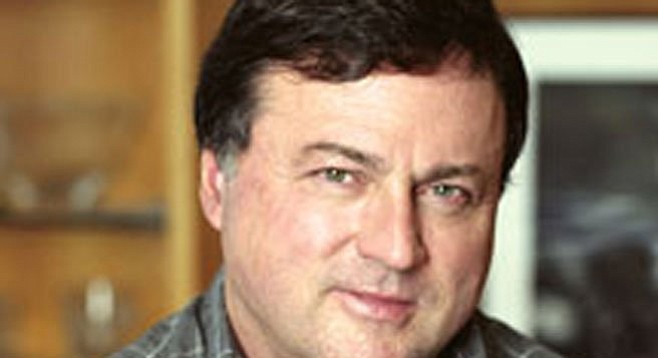
With the blood of the Chargers stadium massacre barely crusted over, is the Union-Tribune in an unseemly hurry to serve up yet another public money development scheme for the 166-acre chunk of city-owned real estate known as Qualcomm Stadium?
So assert city hall scandal watchers, noting that the Chicago-owned paper has of late been vigorously hyping plans to turn the premises over to San Diego State University for a new sports venue, to be built in a deal with favored housing developers closely linked to the school's Campanile Foundation.
"Imagine the possibilities: housing, a university hub, a new SDSU football stadium, maybe doubling as a Major League Soccer venue, park space," proclaimed a January 12 editorial.
"The surer thing, economically at least, would come from 6,000 new housing units on half of those 166 acres," chimed in columnist Dan McSwain in a Sunday spread headlined "Chargers exit may help San Diego, if its leaders are wise."
Said the story, "Legal obstacles would be high and such a project would require years, perhaps even some ballot-box zoning, but San Diego’s major economic problem is lack of housing that workers can afford."
Added the take, "As for affordability, the market could be expected to deliver units priced for the middle class, no public subsidy required," not mentioning the lost value of the public land giveaway.
Per McSwain, "The opportunity has provoked drooling from here to Texas."

Though further specifics were omitted, those familiar with the U-T's rapidly gathering PR storm say that the Texan in question is Houstonian John Moores, the ex-Padres owner and mega-million-dollar tax-subsidized baseball stadium beneficiary whose brush with the law in the 2001 Valerie Stallings influence-peddling case has since kept him and his multitude of local real estate activities largely out of public view.
As reported here last spring, SDSU's Corky McMillin Center for Real Estate hosted a March, 2016, dog-and-pony show by Moores-controlled JMI Realty to boost the mogul’s plans.
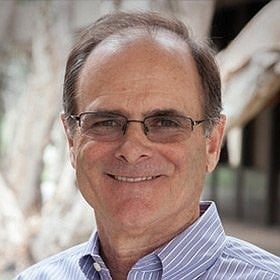
"Now, as the Chargers work to develop a downtown San Diego football stadium, the JMI team (represented by President John Kratzer and Steve Peace), working in concert with Steve Black of Cisterra Development, another prominent San Diego developer (and SDSU alumnae), will unveil their proposal to develop the Qualcomm Stadium site into a civic gem that all SDSU alumni and San Diego County residents will claim proudly," said the invitation.
It isn't the first time that McSwain has highlighted a Moores-backed project without mentioning the financier by name.

Another McSwain column last May touted a $13.5 million fiber-optic high-speed internet plan for the tony suburb of Rancho Santa Fe, saying, "If sparsely populated Rancho Santa Fe can provide basic fiber-optic Internet for $130 a month, just imagine how low prices could go in dense neighborhoods like Mission Valley, downtown San Diego or most of Carlsbad."
The next month, a nasty battle for control of the Rancho Santa Fe homeowners board revealed that Moores and his associates, including Kratzer and a son of former state Democratic senator and Moores advisor Steve Peace, had quietly engineered the controversial plan.
“Our financial interests are the same as yours: our homes,” said Moores and his associates in a June 2 advertisement in the Rancho Santa Fe Review, but the Moores slate ultimately lost the contest.
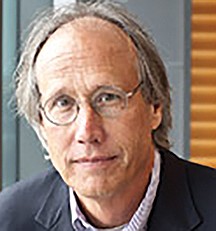
Moores and another longtime associate, Charles Noell, have long sought to acquire a professional soccer franchise in Britain, with their latest attempt to acquire the Nottingham Forest falling through last week.
The U-T has repeatedly mentioned Moores and company as possible proprietors of a new Major League Soccer franchise to occupy a new stadium with San Diego State on the Qualcomm site.
"Qualcomm Stadium would have to be demolished, and the city would have to gift the lucrative piece of land to a development group (that currently involves former Padres owner John Moores) proposing to build a 'university annex' there for San Diego State and UC San Diego with a mid-sized stadium as a centerpiece," the paper reported December 15.
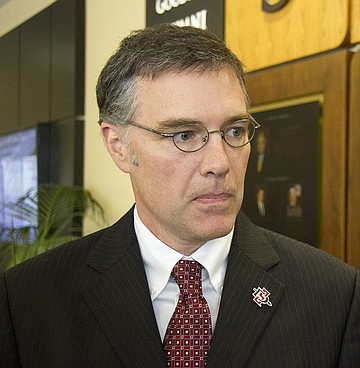
On Sunday (January 15), the U-T launched yet another stadium salvo, in the form of a sports story headlined: "New Stadium is SDSU [athletic director John Wicker's] top priority."
"With the NFL team apparently removed from the equation, the situation calls for SDSU to take a bigger lead, possibly working with a group of investors who want to bring a Major League Soccer team to town."
In the story, Wicker cited as a template for the venture a posh athletic palace closely tied to Moores.
"Among the university stadiums that Wicker is looking at for models is the venue at the University of Houston," the U-T reported. "It features 26 suites, 42 loge boxes, 766 club seats, two suite decks and four party decks."
Though unmentioned by the paper, Moores and ex-wife Becky are alumni of the Texas university, and the mega-millionaire’s JMI Sports consulting group has played a big role in putting together redevelopment plans for the school's basketball complex, known as Hofheinz Pavilion, as well as the school's football complex, per JMI's website.
"The Hofheinz plan was revisited in December of 2014, with the help of JMI Sports," says a May 2015 account posted on the JMI website, pegging the putative cost of renovating the 1969 facility at near $70 million.
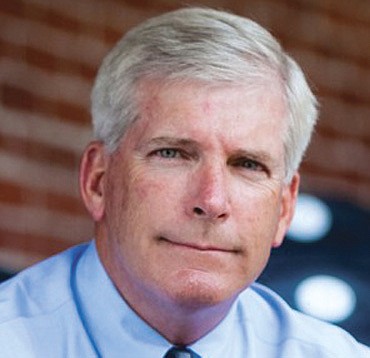
JMI Sports also has a close relationship with SDSU, having hired ex–athletic director Jeff Schemmel after he departed the school in November 2009 when it came to light he'd used state funds to drop in on his mistress in Alabama.
In addition, JMI acted as the "owners representative" during development and construction of SDSU's recently opened Jeff Jacobs J.A.M. basketball coaching center.
“JMI Sports was instrumental in the negotiation of the construction contract, spearheaded the value engineering effort, and provided unique insight that extends from branding elements and acoustical treatments to video coaching," according to the JMI website.


With the blood of the Chargers stadium massacre barely crusted over, is the Union-Tribune in an unseemly hurry to serve up yet another public money development scheme for the 166-acre chunk of city-owned real estate known as Qualcomm Stadium?
So assert city hall scandal watchers, noting that the Chicago-owned paper has of late been vigorously hyping plans to turn the premises over to San Diego State University for a new sports venue, to be built in a deal with favored housing developers closely linked to the school's Campanile Foundation.
"Imagine the possibilities: housing, a university hub, a new SDSU football stadium, maybe doubling as a Major League Soccer venue, park space," proclaimed a January 12 editorial.
"The surer thing, economically at least, would come from 6,000 new housing units on half of those 166 acres," chimed in columnist Dan McSwain in a Sunday spread headlined "Chargers exit may help San Diego, if its leaders are wise."
Said the story, "Legal obstacles would be high and such a project would require years, perhaps even some ballot-box zoning, but San Diego’s major economic problem is lack of housing that workers can afford."
Added the take, "As for affordability, the market could be expected to deliver units priced for the middle class, no public subsidy required," not mentioning the lost value of the public land giveaway.
Per McSwain, "The opportunity has provoked drooling from here to Texas."

Though further specifics were omitted, those familiar with the U-T's rapidly gathering PR storm say that the Texan in question is Houstonian John Moores, the ex-Padres owner and mega-million-dollar tax-subsidized baseball stadium beneficiary whose brush with the law in the 2001 Valerie Stallings influence-peddling case has since kept him and his multitude of local real estate activities largely out of public view.
As reported here last spring, SDSU's Corky McMillin Center for Real Estate hosted a March, 2016, dog-and-pony show by Moores-controlled JMI Realty to boost the mogul’s plans.

"Now, as the Chargers work to develop a downtown San Diego football stadium, the JMI team (represented by President John Kratzer and Steve Peace), working in concert with Steve Black of Cisterra Development, another prominent San Diego developer (and SDSU alumnae), will unveil their proposal to develop the Qualcomm Stadium site into a civic gem that all SDSU alumni and San Diego County residents will claim proudly," said the invitation.
It isn't the first time that McSwain has highlighted a Moores-backed project without mentioning the financier by name.

Another McSwain column last May touted a $13.5 million fiber-optic high-speed internet plan for the tony suburb of Rancho Santa Fe, saying, "If sparsely populated Rancho Santa Fe can provide basic fiber-optic Internet for $130 a month, just imagine how low prices could go in dense neighborhoods like Mission Valley, downtown San Diego or most of Carlsbad."
The next month, a nasty battle for control of the Rancho Santa Fe homeowners board revealed that Moores and his associates, including Kratzer and a son of former state Democratic senator and Moores advisor Steve Peace, had quietly engineered the controversial plan.
“Our financial interests are the same as yours: our homes,” said Moores and his associates in a June 2 advertisement in the Rancho Santa Fe Review, but the Moores slate ultimately lost the contest.

Moores and another longtime associate, Charles Noell, have long sought to acquire a professional soccer franchise in Britain, with their latest attempt to acquire the Nottingham Forest falling through last week.
The U-T has repeatedly mentioned Moores and company as possible proprietors of a new Major League Soccer franchise to occupy a new stadium with San Diego State on the Qualcomm site.
"Qualcomm Stadium would have to be demolished, and the city would have to gift the lucrative piece of land to a development group (that currently involves former Padres owner John Moores) proposing to build a 'university annex' there for San Diego State and UC San Diego with a mid-sized stadium as a centerpiece," the paper reported December 15.

On Sunday (January 15), the U-T launched yet another stadium salvo, in the form of a sports story headlined: "New Stadium is SDSU [athletic director John Wicker's] top priority."
"With the NFL team apparently removed from the equation, the situation calls for SDSU to take a bigger lead, possibly working with a group of investors who want to bring a Major League Soccer team to town."
In the story, Wicker cited as a template for the venture a posh athletic palace closely tied to Moores.
"Among the university stadiums that Wicker is looking at for models is the venue at the University of Houston," the U-T reported. "It features 26 suites, 42 loge boxes, 766 club seats, two suite decks and four party decks."
Though unmentioned by the paper, Moores and ex-wife Becky are alumni of the Texas university, and the mega-millionaire’s JMI Sports consulting group has played a big role in putting together redevelopment plans for the school's basketball complex, known as Hofheinz Pavilion, as well as the school's football complex, per JMI's website.
"The Hofheinz plan was revisited in December of 2014, with the help of JMI Sports," says a May 2015 account posted on the JMI website, pegging the putative cost of renovating the 1969 facility at near $70 million.

JMI Sports also has a close relationship with SDSU, having hired ex–athletic director Jeff Schemmel after he departed the school in November 2009 when it came to light he'd used state funds to drop in on his mistress in Alabama.
In addition, JMI acted as the "owners representative" during development and construction of SDSU's recently opened Jeff Jacobs J.A.M. basketball coaching center.
“JMI Sports was instrumental in the negotiation of the construction contract, spearheaded the value engineering effort, and provided unique insight that extends from branding elements and acoustical treatments to video coaching," according to the JMI website.
Comments